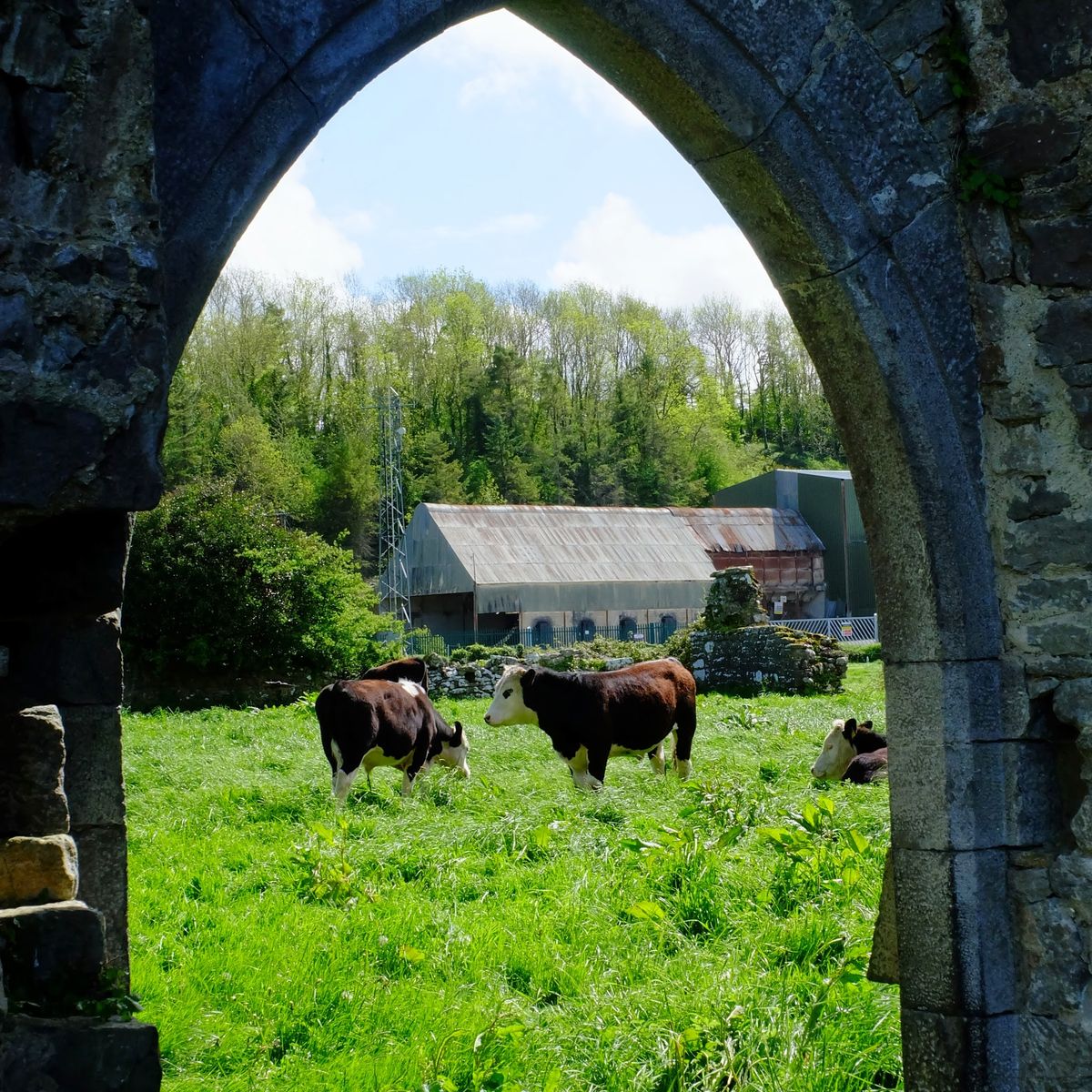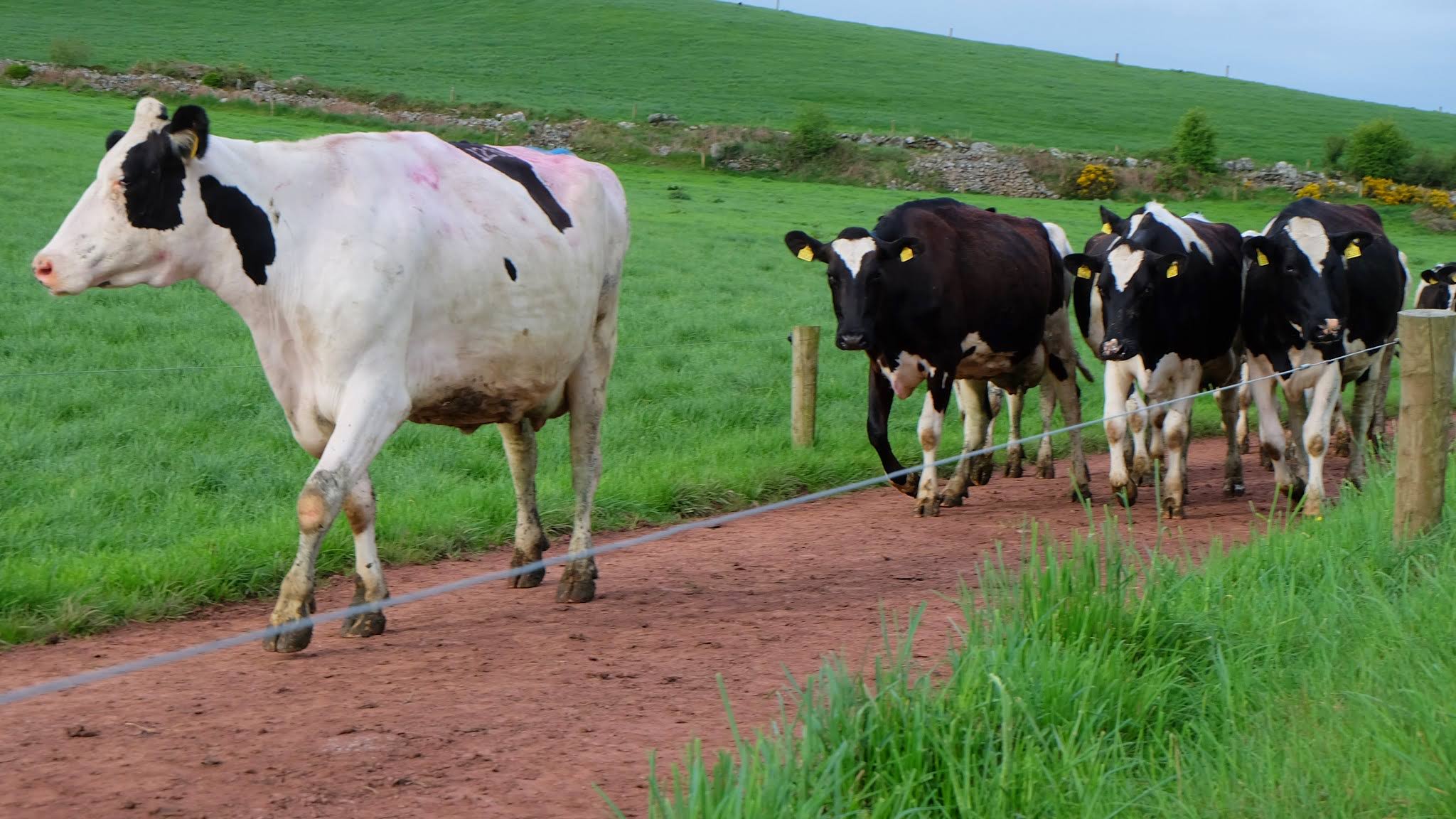Ruminations on the Death of Christ

This is an essay that Monkey submitted for a mythology class. The initial feedback was that the essay was too explain-y, too scientific, not argumentative enough. There may be a point to that as Buster astutely pointed out, "innovation is not necessarily the same thing as argumentation." But on the other hand, parentally stung, we submit this to the judgement of our readership.
Ruminations on the Death of Christ
“[1:24] And God said, Let the earth bring forth the living creature after his kind, cattle, and creeping thing, and beast of the earth after his kind: and it was so.”
On the sixth day, God brought forth cows, the consummate ruminant. And these cows went forth and multiplied, even unto the present day. And each cow, as it was created, was created to eat grass, and chew cud. And the chewing of cud is like unto the coming of Christ, and his torment, and the Kingdom of Heaven.
Cows, among other animals, chew cud. This refers to an act of chewing and swallowing one’s food, digesting it partially, regurgitating and re-chewing it, before final digestion. This allows the cows to absorb greater quantities of nutrients, and get better value from an individual mouthful. A key characteristic of acceptable mammals under kosher, a dietary restriction laid out in the Old Testament, is that they chew cud, revealing the importance of these creatures from the ancient past to the present day.
The First Coming
A key series of events related in the New Testament is the torture and death of Jesus, forming a metaphorical mowing of the grass that had grown for over 30 years. As the cow chews the initial mouthful, we are reminded of the torture endured within that story, the grass masticated and destroyed to serve the greater will, that of the hungry cow.
As the grass passes into the rumen, the initial digestive organ, it dies a symbolic death, destined to be reborn in cud before it is again, truly, digested. The nature of it is inexorably changed, transformed into a new, purer shape, divested of its living flesh and reduced to simple cud.
After some time, the metaphorical three days in the cave, the ruminated cud is returned to the mouth, to again experience the pain of the world. The once-grass is rechewed, a reminder of the days as true plant life. Then, when its time is done, it is again swallowed and digested. It returns to the rumen, and thence to the rest of the gut, finally prepared by perils and toils, for the kingdom of Heaven.
Arguing the Point
Why cows? Why the bible? Why make such comparisons and metaphors? In response, I ask, why not make those comparisons? They are thoughtful and interesting, and they reveal new and unexpected depths in the underlying fabric of our base texts.
To actually argue the metaphor, let us take it one part at a time. Firstly, the predicating idea that Jesus is as the grass. The connection between Jesus and verdant new growth is made often in the bible, such as in John 15:1, wherein Jesus is described as the vine that brings forth fruit. Consider also John 1:29, and other depictions of Jesus as the Lamb of God, an image that inherently conveys youth and springtime. Sheep, too, are ruminants, strengthening the connection between Jesus and the chewing of cud.

The next piece of the tale is the eating of the grass. As Jesus lived peaceably for over 30 years, so too does the grass grow easily before the cow arrives. Though a blade of grass may endure some struggles, its life is not cut short until that day. However, as the cow crops the new growth short, so too did Jesus’ torments end the time of Christ on Earth. Within the mouth of the cow the grass is masticated, in a sense whipped and tortured, crowned by thorny teeth, before the swallowing of a final death. As a cow must eat, even if it destroys the grass, so too was Jesus born to die. And as a cow cannot eat only one blade of grass, so too do we see the two criminals crucified alongside Jesus.
The darkness of the rumen begins the next point, as Jesus lies dead in the cave. Yet, as within the texts that describe the harrowing of Hell, a change is taking place. As can be seen both within said texts, and within the digestive process, the central figure has descended into darkness, to seek what lies within, and will return altered for it. As Jesus can be seen to have returned godlier in aspect, the notion of Father and Son having blurred, so too is the tormented and destroyed grass reimagined, becoming a singular mass of cud where there were formerly distinct blades.
When the cow regurgitates its cud, and that mash of once-grass is returned to the relative light of the mouth, and therefore the world, it reappears among its unchewed fellows like the opening of the cave. So, too, that mingling of the purified cud and the grass could be considered a baptism of sorts, branding the new to be forever changed. After this the cud is ready for the final change.
On return to the rumen, with the second swallowing, as with the Ascension of Christ, the cud passes through a sieve of sorts to prevent the passage of untried grass particulate. Within the intestines, it is fully digested, the good provided by it integrated into the greater good of the higher body. The blending of the body and spirit is complete, yet the substance remains. So, too, in this we see the essence of the singular nature of the Father and Son, who despite the grass and cow being separate, are inherently tied by the nature of digestion, and the incorporation of nutrients.
The final crux of the comparison lies in the final fate of both Jesus and the grass. As Christ has passed through the initial life of relative peace, into the torment of mastication, through the rebirth of the rumen, the return to the light within the second chewing, the passing through of the darkness into the final return to the godly whole. And as is promised within the words of Jesus, a final heaven awaits.
To review, the argument as it stands is that Jesus, especially as he pertains to his death and ascension, is analogous to a blade of grass that stands nobly in the field, before being cropped as a necessary, a tragic end to sustain the greater whole. Much the same is the theme of death and rebirth, as is inherent to the story of Jesus. That the form changes doesn’t destroy the strength of the initial incarnation, nor divest it of the meaning.
The final pertinent comparison comes in the form of the final end for both our blade of grass, and Jesus as the Son of God. Both ascend to their Kingdom of Heaven, the final peaceful rest for the martyr. Within the cowpat where the remnants of the grass come to rest, the angels in the form of flies circle benevolently, stroking their arms in Heaven’s gentle music, fluttering their ethereal wings in grace at the presence and gift of the Father, the cow.

References:
The Bible. Authorized King James Version, Oxford UP, 1998.
Medicine, Center for Veterinary. “How Cows Eat Grass.” U.S. Food and Drug Administration, FDA, www.fda.gov/animal-veterinary/animal-health-literacy/how-cows-eat-grass. Accessed 18 Oct. 2023.




